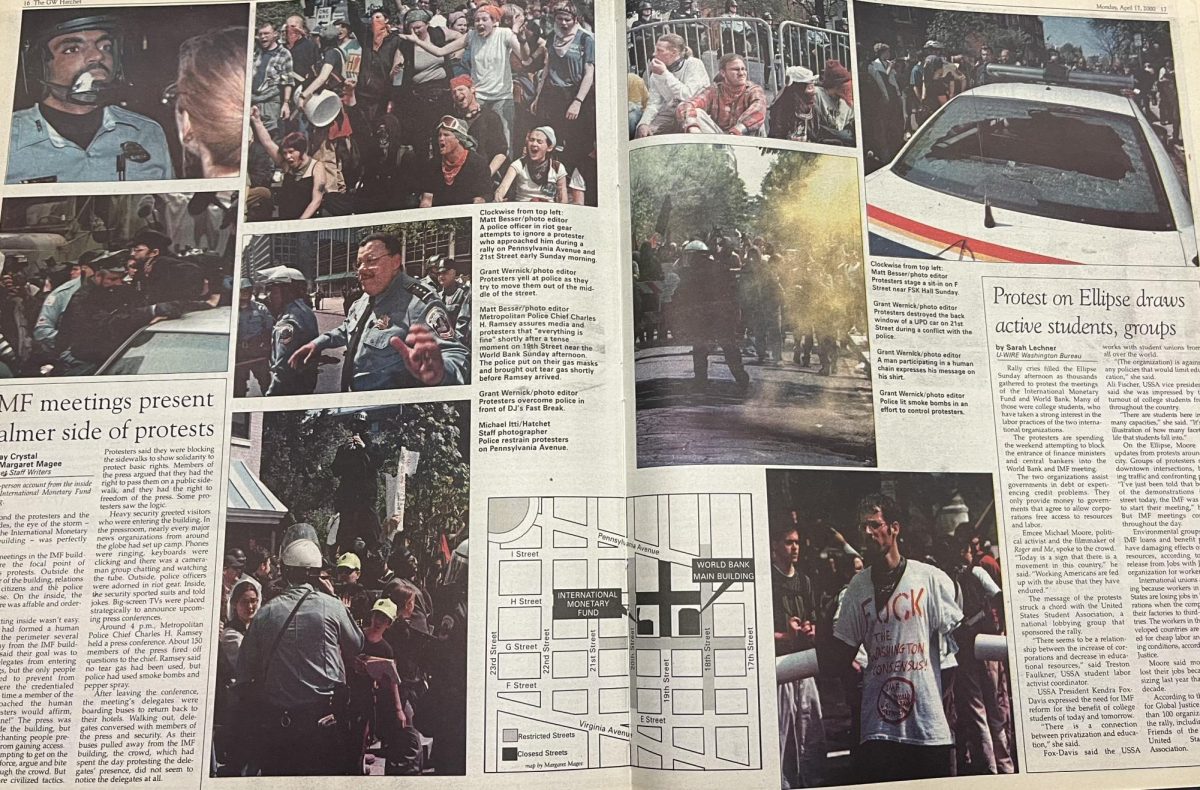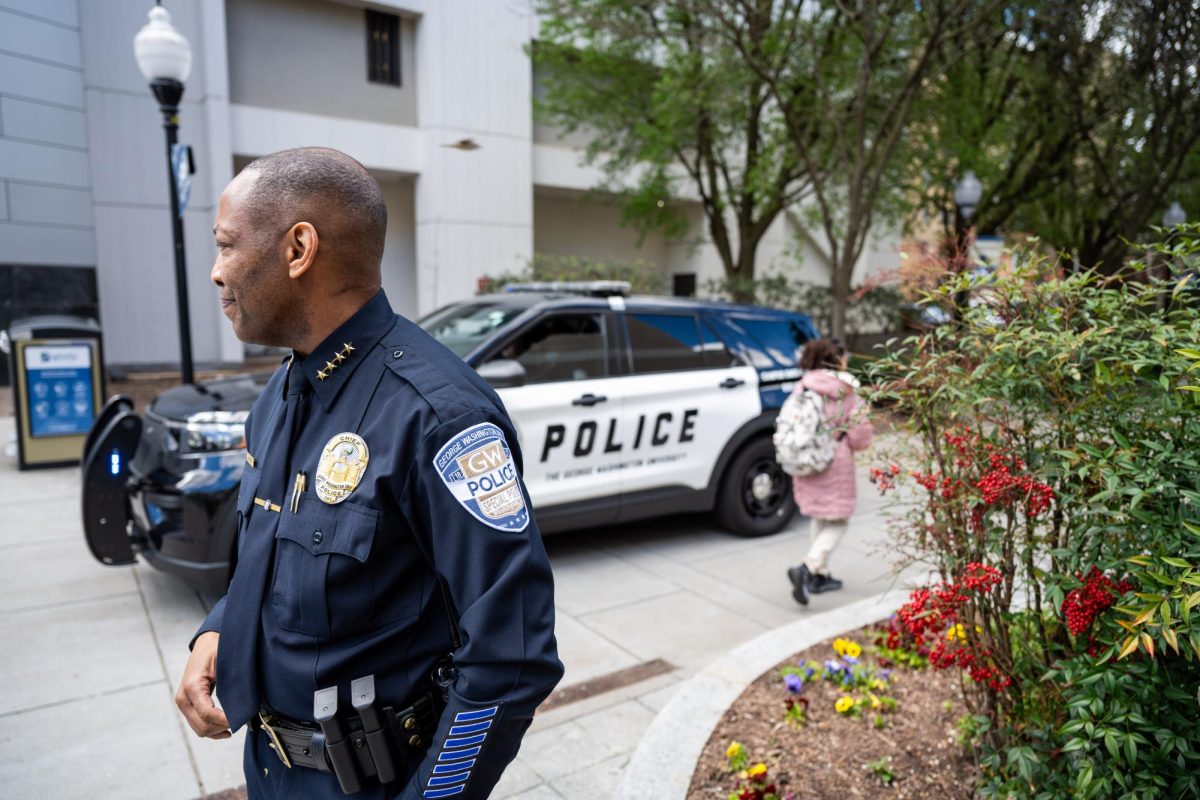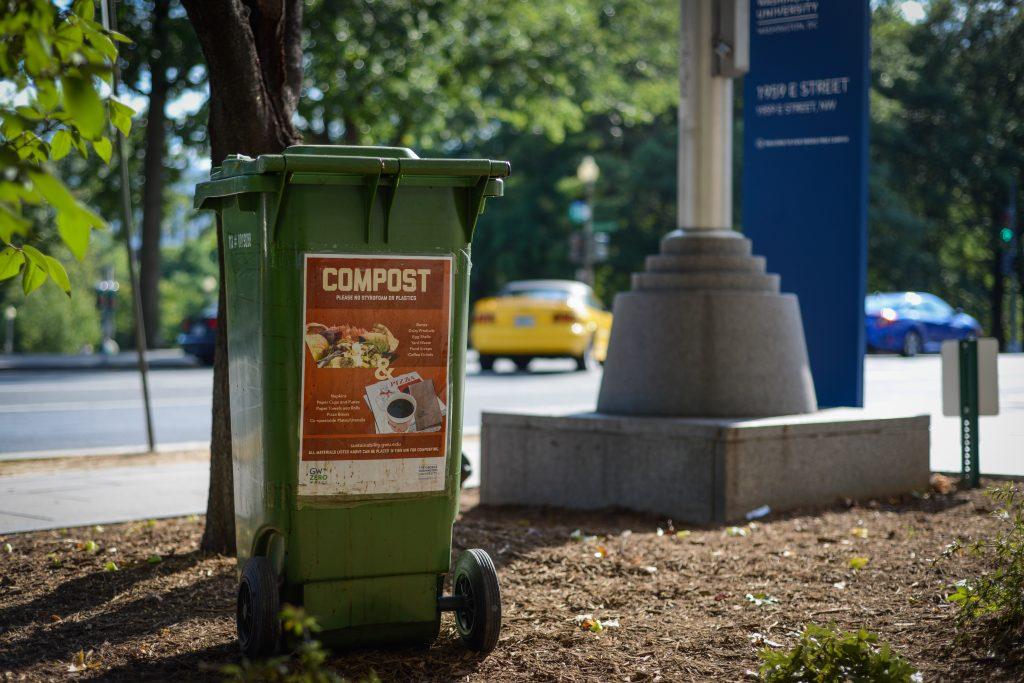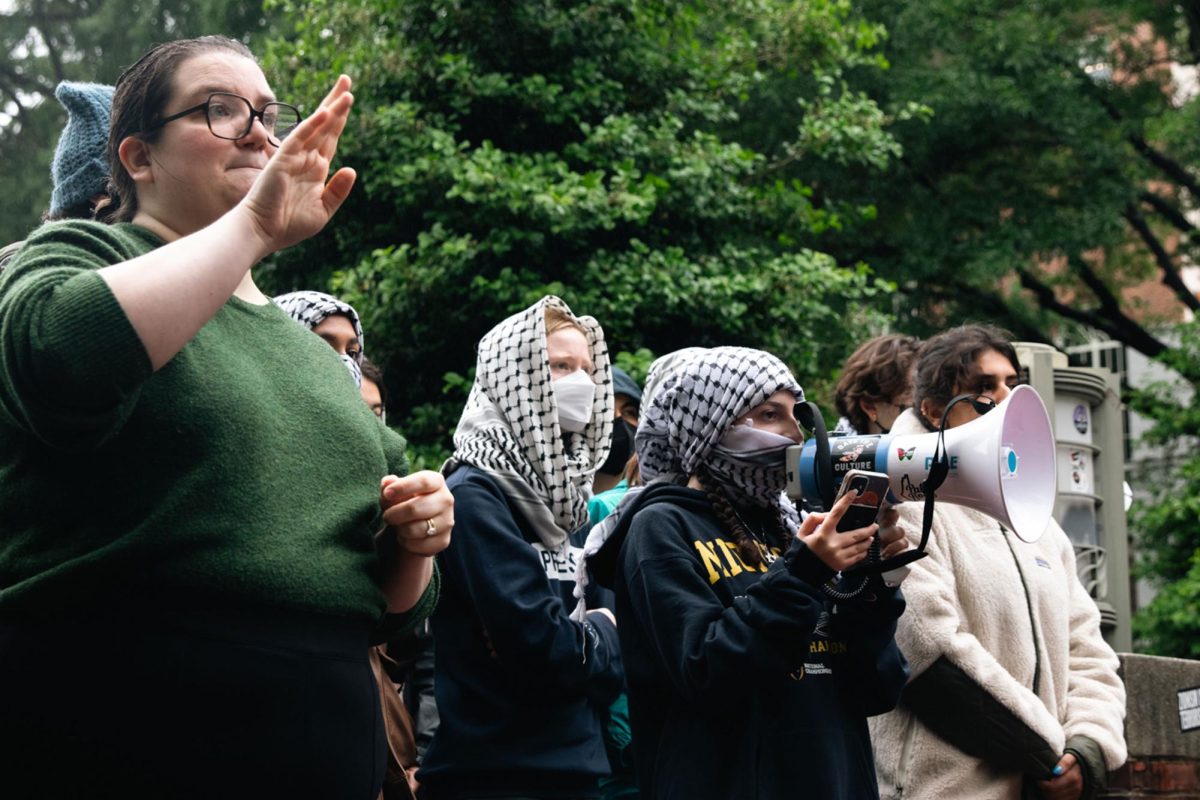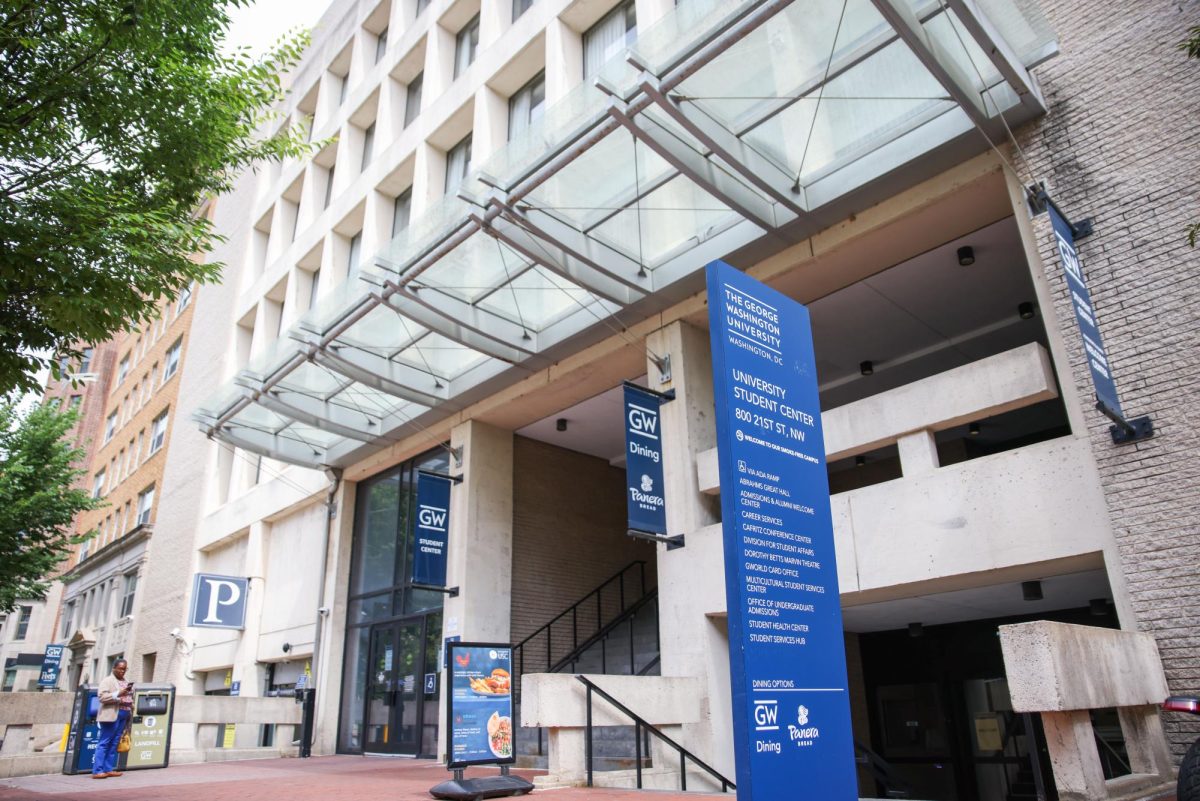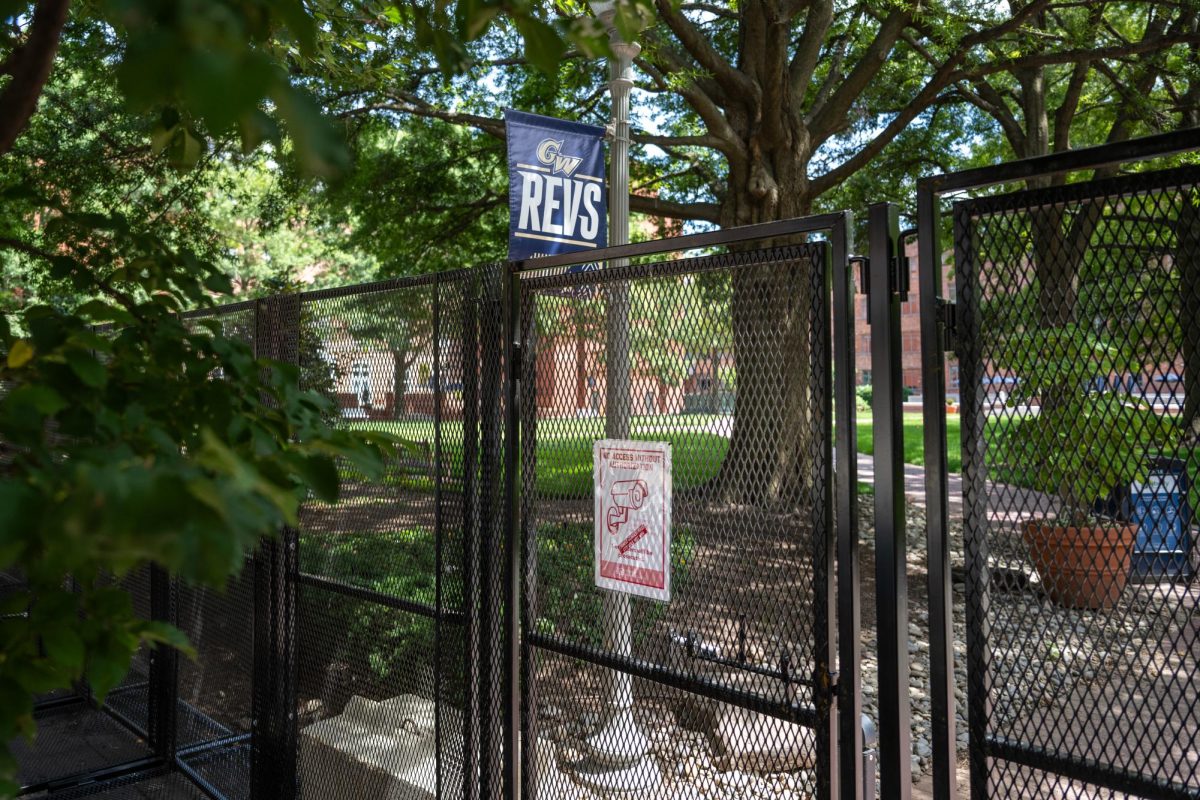GW joined over two dozen universities across the country on Thursday to demand their schools divest from companies with ties to Israel after protesters vowed to occupy University Yard until officials complied with their demands.
But throughout GW history, students have built a long legacy of protesting global conflicts from the streets of Foggy Bottom, from the Vietnam War to South African apartheid. Here are some of the most notable demonstrations throughout GW’s history:
April 24, 1969: A group of 40 members from Students for a Democratic Society seized and occupied the Institute for Sino-Soviet Studies, a center in the Elliott School of International Affairs dedicated to research surrounding the Soviet Union and the People’s Republic of China, for roughly five hours to protest the University’s actions regarding the Vietnam War.
Protesters demanded officials close the institute, cut ties with schools offering Reserve Officers’ Training Corps programs, admit all Black students who apply to the University and grant amnesty to those involved with the occupation.
During the occupation, a crowd of about 1,000 students – most of whom disapproved of the demonstration and acted hostile towards the occupiers – milled around the building until after midnight. The then-Vice President of Student Affairs William P. Smith told demonstrators around 3:10 a.m. that if they did not leave the building within 15 minutes, the University would seek a ten day temporary restraining order against them. Demonstrators exited the building after the announcement.
“The building was emptied two minutes before the deadline,” a Hatchet article from April 24, 1969 states.
May 6, 1970: More than 1,000 students occupied the building now known as the University Student Center and informally dubbed it the “Kent State Memorial Center” to honor the five Kent State college students who were killed by Ohio National Guardsmen at a rally opposing the expansion of U.S. involvement in the Vietnam War and the draft.
Students rededicated the building following a campus procession by silent marchers grieving the shooting at Kent State.
“The dedication followed a procession around campus by 800 silent marchers mourning the five Kent State students who were killed by Ohio National Guardsmen. Another student still lies critically injured,” read a Hatchet article from May 6, 1970.
Then-University President Lloyd Elliott canceled classes in response to the widespread campus protests after the demonstrations cut classroom attendance by 30 percent. The University’s final exam schedule hung in limbo after the protests.
Administrators named the building a year later after Cloyd Heck Marvin, a former University president who worked to prevent Black students from enrolling at GW and threatened to kick GW Hillel off campus. Students walked out of the ceremony where officials swore the Marvin name in to protest the building’s new namesake.
November 21, 1985: More than 40 anti-apartheid student protestors demanded officials immediately divest from companies that operated in South Africa and form a committee of student, faculty and administrators to recommend divestment strategies and a timetable for implementation.
“Singing 1960’s protest songs and chanting ‘Break the ties to apartheid,’ GW Voices for a Free South Africa staged a candlelight vigil on the steps of Rice Hall yesterday afternoon to catch the attention of employees and administrators leaving the building,” The Hatchet reported.
A month earlier, then-University President Lloyd Elliott said he would know within “two or three months” if GW could build an investment portfolio free of companies that operated in South Africa. But when protestors demanded for divestment in November, Elliott questioned the effectiveness of the U.S. divesting unless other major stakeholder countries divested as well.
April 17, 2000: Scores of protesters across the country swarmed GW’s campus to attempt to close International Monetary Fund and World Bank meetings in Foggy Bottom. Nearly 30 students created human chains across campus, diverting traffic and disrupting pedestrians, students and tourists who attempted to walk through the Foggy Bottom and downtown areas of the District.
“Chanting ‘peace, love, unity, respect, no more power to the IMF,’ a group of nearly 30 protesters sat in a human chain in the intersection of 23rd and H streets for half an hour while cars attempting to pass through the intersection were forced to turn around,” The Hatchet reported.
Busloads of MPD officers decked out in riot gear used smoke grenades to disperse a flood of protesters, who dressed in black and waved flags with anarchy symbols, from G Street. The officers left after a brief stand-off with students on the corner of 21st and G streets. Some GW students said they felt safe and supported the student’s demonstration of First Amendment rights, despite the crowds of police and protesters on campus.


